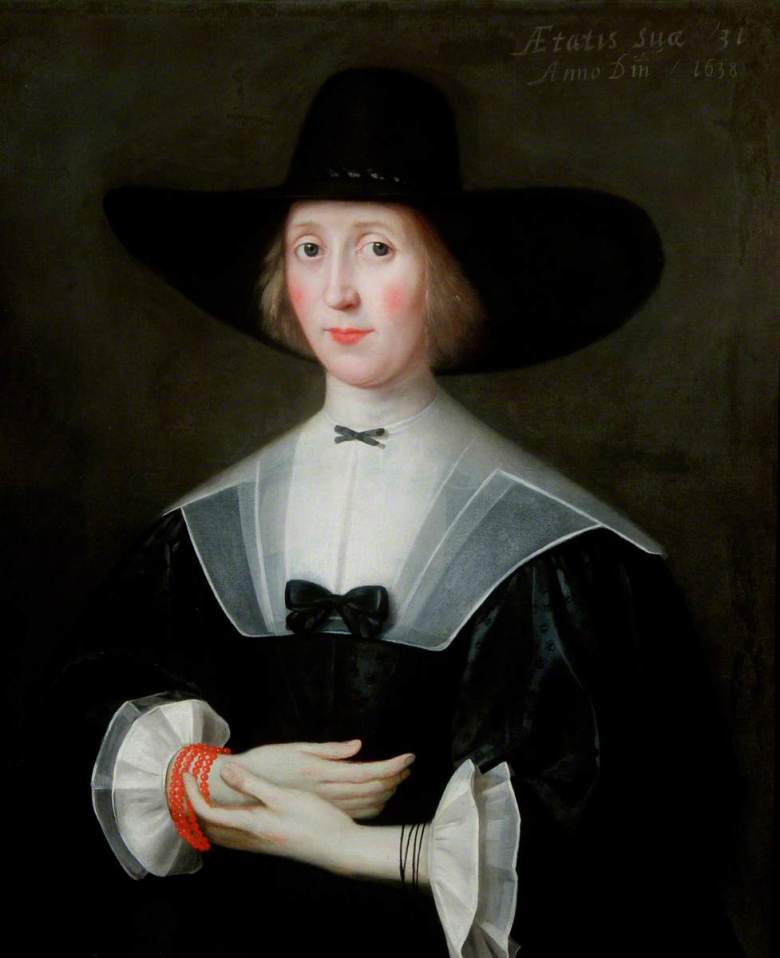=man transform’d: or, the artificiall changling historically presented, in the mad and cruell gallantry, foolish bravery, ridiculous beauty, filthy finenesse, and loathsome loveliness of most nations, fashioning and altering their bodies from the mould intended by nature; with figures of those transfigurations. To which artificiall and affected deformations are added, all the native and nationall monstrosities that have appeared to disfigure the humane fabrick. With a vindication of the regular beauty and honesty of nature. And an appendix of the pedigree of the English gallant. This book was written by John Bulwer and first published in 1650. The second edition in 1653 had added woodcuts. Here is the author from the front page of the second edition looking suitably authorial dressed in one of those artistic cloaks that artists seem to like (maybe it gives good reason not to paint all those messy costume details) with a plain falling band (spot the overlapping edges) and a nice decorative tassel on his bandstring.

John was a doctor, but took a sabatical to write several books exploring the body and communication by gesture which was a particular interest. This tome as the title suggests is all about how the body can be altered from its natural state by clothes, tattoos, body adornments etc. Some of his information came from Dutch colonial settlers and the work has been described as one of the first studies in comparative cultural anthropology. The fronticepiece is very interesting and some of the characters depicted appear later in the book. For our purposes the lady bottom centre is worth studying as not many rear views appear in contemporary illustrations. You can see the petticoat gathers, the cut of her bodice and the rear of her kerchief. I also quite like the guy on the left with a face in his bum. Perhaps literally talking out of it?

Anyway, what drew the book to me was this image of a girl in a tight laced bodice and the descriptive text. It’s in chapter 20 (he calls them scenes); Dangerous Fashions and desperate Affectations about the Breast and the Waste. The girl is wearing a linen coif on her head, a tightly laced bodice with sleeves and a nice layered kerchief.

John is pretty forthright in his opinion. He says: ‘Another foolish affection there is in young Virgins, though grown big enough to be wiser, but that they are led blindfold by Custome to a fashion pernicious beyond imagination; who thinking a slender waste a great beauty, strive all that they possibly can by streight-lacing themselves, to attain unto a wand-like smallnesses of waste, never thinking themselves fine enough untill they can span their Waste. By which deadly Artifice they reduce their Breasts into such streights, that they soon purchase a stinking breath; and while they ignorantly affect an august or narrow Breast, and to that end by strong compulsion shut up their Wasts in a Whale-bone prison, or little ease; they open a door to Consumptions, and a withering rottenness.’
Good advice I say. There’s a lot more to look at in this book, particularly the appendix on the English Gallant. I shall return,



